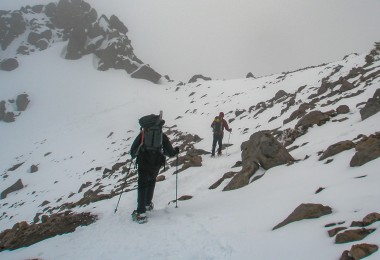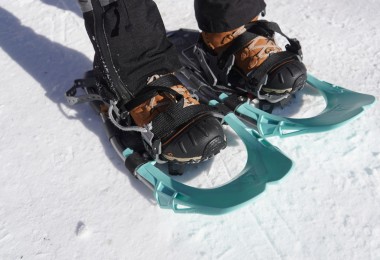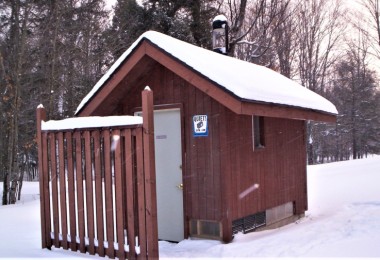As snowshoeing continues to grow in popularity, you may be wondering why you need to use snowshoes. In addition to the fun garnered through snowshoes, you get three major advantages from a snowshoe that you do not get from a boot or shoe alone: floatation, traction, and stability.
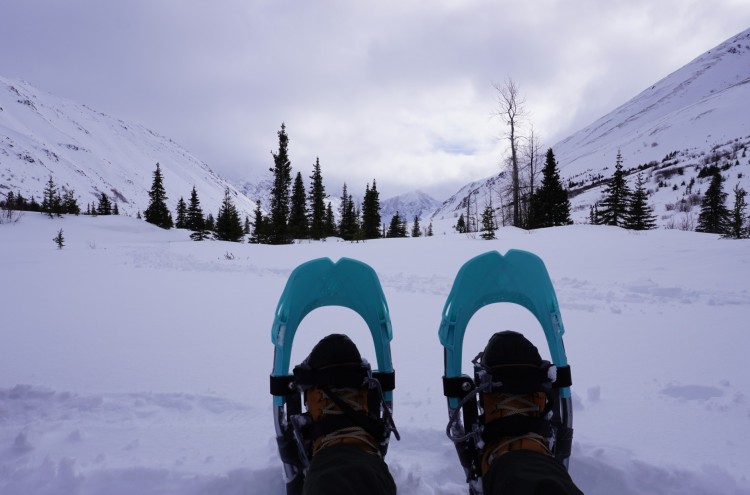
You can get three significant advantages from using snowshoes that you can’t get from boots alone. Photo: Susan Wowk
Some of the links in this article may contain affiliate links. When you purchase using these links, part of the proceeds go to Snowshoe Mag. Additionally, as Amazon Associates, we earn from qualifying purchases. Please see our disclosure for more details.
Advantages of Using Snowshoes
There are times when you are snowshoeing when you are benefiting from all three of these advantages. At other times, you may only need one or two. Learn the importance of each advantage for your next outing.
Floatation
Floatation is the ability of a snowshoe to limit how far your feet sink down into deep or soft snow. If you have ever “post holed” by trying to cross deep snow without snowshoes, you know what it’s about.
Depending on recent snowfall and elevation changes, the depth of snow can change along the trail. Thus, it can be helpful to bring snowshoes with you even if the path starts with minimal snowfall. You can always strap your snowshoes to your pack and use them once you need floatation in deep snow.
Read More: How To Choose the Best Trail: Tips for Learning When You Need Snowshoes
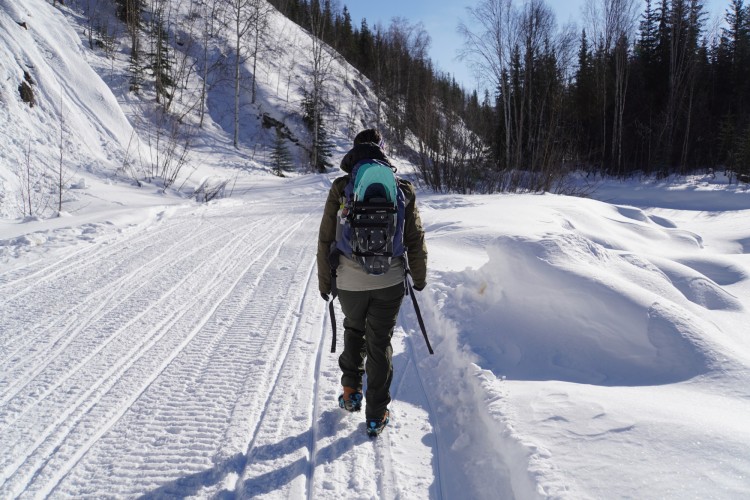
If you don’t need floatation in deep snow and are walking in changing conditions, you can always strap your snowshoes to your backpack. Photo: Paul Wowk
Traction
Traction is what distinguishes snowshoes from just about every other winter sport (i.e., no sliding). Snow, ice, and the things they cover are slippery, and the metal claw-like devices on the bottom of snowshoes give you the grip to go or stop as you wish.
This grip is especially important when going up or down hills or when conditions are particularly slippery. However, when trails are entirely iced over or have a combination of minimal snow and ice, you can use a traction device such as Kahtoola Microspikes or Yaxtrax Ascents as an alternative to snowshoes.
Read More: Yaktrax Reviews: The Ascent and Summit for Slippery Climbs
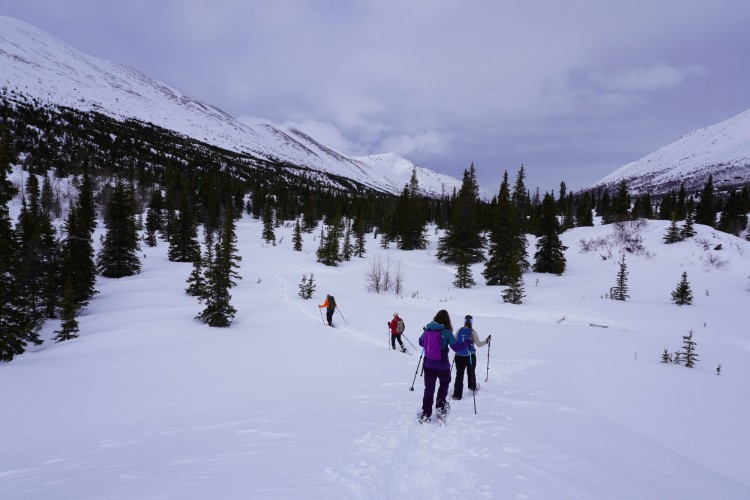
The traction on snowshoes helps you stop and go as you please and go up and down hills. Photo: Susan Wowk
Stability
Snow can be an uneven surface and hide objects beneath its surface. The extra width and length of snowshoes help you maintain balance when encountering these irregularities. Sprained ankles are a rarity when snowshoeing. However, if you do experience one, make sure to treat it properly.
In addition to snow, snowshoes can also provide stability on the sand. Though there are a few things to consider if you use snowshoes on the sand, additional stability is one reason why you can use them.
Read More: Definitive Guide: How To Choose the Perfect Snowshoes for Your Needs
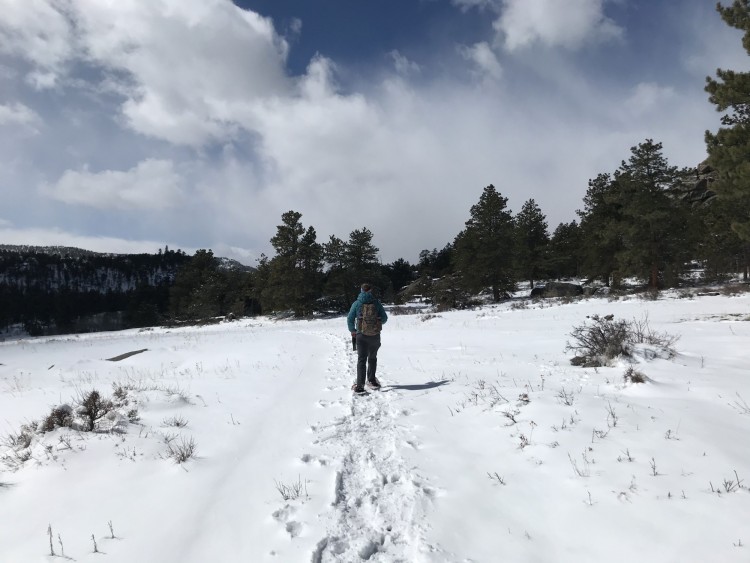
Snow can easily hide objects on the trail, and snowshoes help provide stability. You may not see it here, but this trail is moderately uneven and rocky under the snow. Photo: Susan Wowk
Final Considerations
We’ve talked about the advantages of using snowshoes. However, there are some times, such as snowshoeing along on a flat, smooth, hard machine groomed trail, when the snowshoe gives you no advantage and is actually a hindrance.
Some individuals may still choose to wear snowshoes in these conditions for other reasons. It’s a matter of personal preference – just as you might run 26.2 miles on the road instead of driving a car. Or you can walk on a trail instead of riding a mountain bike.
Overall, snowshoeing can be transportation, but it can also be a sport, just recreation, cross-training, a game, or just an end in itself.
So, you can wear snowshoes for many reasons, or perhaps for no particular reason at all.
Why do you use snowshoes? What are their advantages or disadvantages? Please share your thoughts with us in the comments below.
This article was first published on July 19, 2004, and was most recently updated and re-published by Susan Wowk on July 28, 2022, to include additional descriptions and formatting changes.
Read Next: Snowshoeing for Beginners: The First-Timer’s Guide

